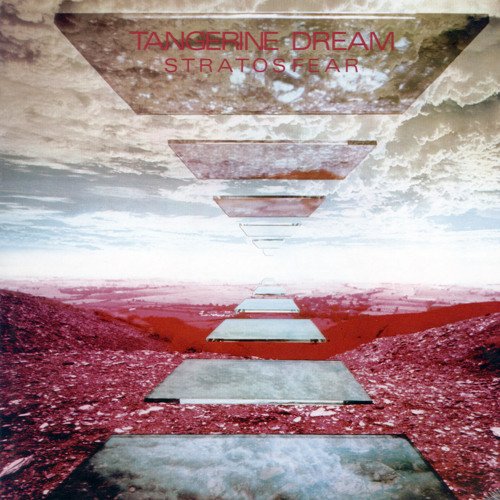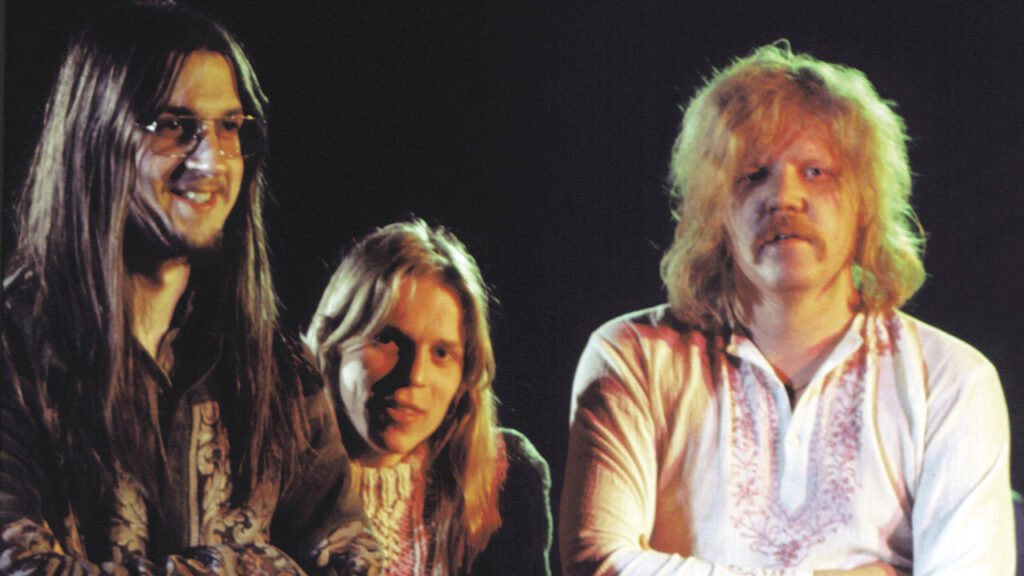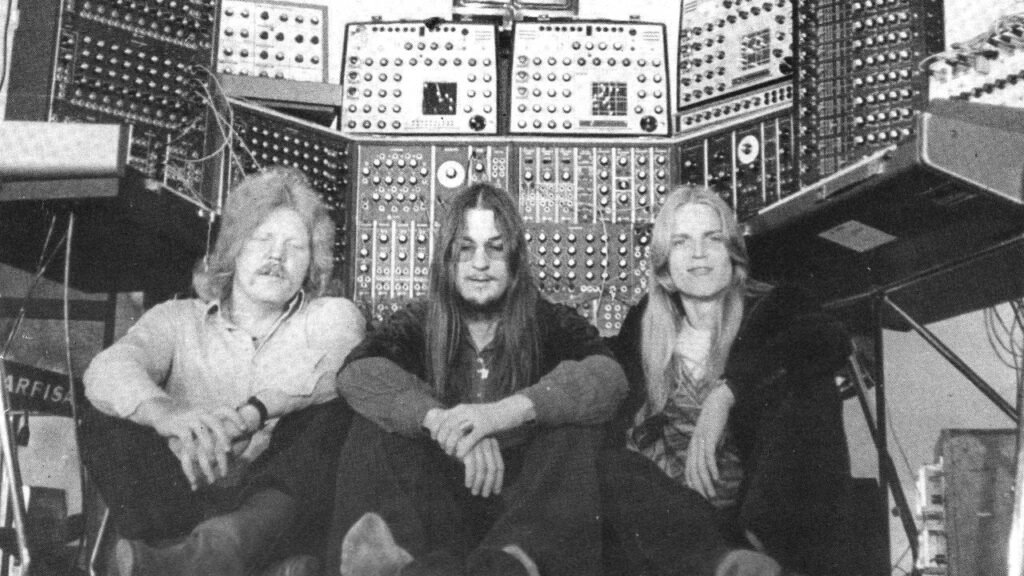In the pantheon of electronic music, few names resonate as profoundly as Tangerine Dream. This German ensemble didn’t just contribute to the genre; they revolutionized it. With their pioneering use of synthesizers and sequencers, Tangerine Dream crafted soundscapes that were both otherworldly and deeply immersive, laying the groundwork for the future of electronic music.
Tangerine Dream’s innovations were pivotal in the development of techno and ambient music. Their groundbreaking techniques in sound design and music production created a blueprint that countless artists would follow. By blending repetitive sequences with expansive, atmospheric sounds, they bridged the gap between the rhythmic intensity of techno and the tranquil, meditative qualities of ambient music.
Delve into Tangerine Dream’s key contributions, exploring their pioneering use of synthesizers, their seminal albums, and their influence on both techno and ambient music. We will examine how their early adoption of electronic instruments and innovative production techniques not only defined their unique sound but also set the stage for the emergence of these two influential genres.
Early Innovations and Techniques

Tangerine Dream’s journey into the heart of electronic music began with their pioneering use of synthesizers, particularly the Moog. The introduction of the Moog synthesizer in their 1974 album “Phaedra” marked a significant turning point, not just for the band, but for electronic music as a whole. The Moog allowed Tangerine Dream to explore uncharted sonic territories, producing sounds that were both novel and otherworldly. This early adoption of electronic instruments set them apart from their contemporaries and established them as trailblazers in the realm of electronic music. The synthesizers provided a new palette of sounds, from deep, resonant basslines to ethereal, soaring melodies, enabling the creation of complex and layered compositions that would become their signature style.
Sequencing and Rhythmic Patterns
Another cornerstone of Tangerine Dream’s innovative approach was their use of sequencers to create repetitive, hypnotic rhythmic patterns. These sequences formed the backbone of many of their compositions, providing a steady, pulsating rhythm that was both mesmerizing and propulsive. This technique laid the groundwork for the repetitive beats that would later become central to techno music. By looping sequences and varying them subtly over time, Tangerine Dream crafted evolving soundscapes that maintained listener interest while driving the music forward. This method of constructing music through repetition and variation is a hallmark of techno, demonstrating Tangerine Dream’s profound influence on the genre’s development.
Soundscapes and Atmosphere
Tangerine Dream’s ability to craft expansive soundscapes and immersive atmospheres was another key element of their innovative approach. Their music often featured long, evolving passages that created a sense of space and depth, inviting listeners to lose themselves in the sound. This focus on creating an auditory environment, rather than just a collection of songs, was a significant influence on the ambient genre.
Albums like “Rubycon” and “Stratosfear” are prime examples of this technique, where layers of sound ebb and flow, creating a meditative and often surreal listening experience. The use of reverb, delay, and other effects to enhance the spatial qualities of their music further solidified their status as pioneers of ambient music. Through these techniques, Tangerine Dream not only pushed the boundaries of electronic music but also helped to define the sound and ethos of ambient music, emphasizing mood, texture, and atmosphere over traditional musical structures.
Key Albums as Genre Milestones
Phaedra (1974)

“Phaedra,” released in 1974, is often hailed as a seminal work in the evolution of electronic music. This album was Tangerine Dream’s first major foray into using sequencers extensively, a move that would greatly influence the structure and sound of techno music. The title track, “Phaedra,” features a mesmerizing sequence of pulsating rhythms that form the foundation of the piece, creating a hypnotic and driving force that propels the listener through an evolving soundscape.
The atmospheric sounds layered over these sequences—swooshing synths, ethereal melodies, and otherworldly effects—prefigured the ambient genre by emphasizing mood and texture over traditional melody and harmony. The innovative use of the Moog synthesizer on “Phaedra” not only defined Tangerine Dream’s sound but also showcased the potential of electronic instruments to create complex, immersive musical experiences.
Rubycon (1975)

With “Rubycon,” released in 1975, Tangerine Dream delved even deeper into the realm of ambient music. This album is characterized by its flowing, meditative soundscapes that seem to ebb and flow like an aural tide. The two-part composition of “Rubycon” takes the listener on an introspective journey, with long, sustained notes and subtle, evolving textures that create a serene and contemplative atmosphere.
The album’s emphasis on space and atmosphere, rather than rhythmic or melodic content, was groundbreaking at the time and helped to define the ambient genre. “Rubycon” demonstrated how electronic music could be used to create immersive, almost otherworldly experiences, influencing countless ambient artists who sought to evoke similar emotions and atmospheres in their own work. The album’s minimalistic approach and focus on creating a cohesive, enveloping soundscape made it a cornerstone of ambient music.
Stratosfear (1976)

“Stratosfear,” released in 1976, represents a pivotal moment in Tangerine Dream’s discography, showcasing their ability to fuse traditional instruments with electronic sounds. This album marked a departure from their purely electronic roots, incorporating elements such as acoustic guitar, piano, and harmonica alongside their signature synthesizers and sequencers. The title track, “Stratosfear,” exemplifies this fusion, blending melodic guitar lines and lush electronic textures to create a rich, layered sound. This integration of organic and synthetic elements expanded the possibilities of electronic music, demonstrating how diverse instruments could coexist within an electronic framework.
“Stratosfear” had a significant impact on genre development by showing that electronic music could be both innovative and accessible, bridging the gap between the experimental sounds of early electronic music and the more structured, melodic approaches that would later characterize genres like synth-pop and new wave. The album’s exploration of diverse musical textures and its successful blending of different sonic elements influenced a wide range of artists across various genres, further cementing Tangerine Dream’s legacy as pioneers of electronic music.
Influence on Techno Music

Repetitive Rhythms and Loops
Tangerine Dream’s early adoption of repetitive rhythms and loops was a key innovation that significantly influenced the development of techno music. Their use of sequencers to create pulsating, hypnotic beats laid the groundwork for the repetitive structures that are central to techno. Tracks like “Phaedra” and “Rubycon” feature intricate, evolving sequences that maintain a steady pulse while gradually introducing subtle variations. This method of building music through repetition and incremental change creates a trance-like effect, a hallmark of techno. By focusing on rhythm and texture rather than traditional melodic progression, Tangerine Dream’s compositions demonstrated how electronic music could evoke powerful emotional responses through minimalistic yet complex arrangements.
Berlin School of Electronic Music
Tangerine Dream played a crucial role in the Berlin School of electronic music, a movement that emerged in the early 1970s and was characterized by its innovative use of synthesizers and sequencers. This movement, which also included artists like Klaus Schulze and Ash Ra Tempel, emphasized extended improvisations and a focus on electronic instrumentation.
The Berlin School’s influence is evident in the structure and aesthetic of early techno, particularly in the way it prioritizes rhythm and atmosphere over conventional song structures. Tangerine Dream’s extensive use of sequencers to create driving, repetitive patterns directly fed into the foundational techniques of techno music. The Berlin School’s ethos of experimentation and its embrace of technology as a creative tool were crucial in shaping the sound and philosophy of techno.
Direct Influence on Artists
Many techno artists have cited Tangerine Dream as a significant influence on their work. Pioneers of the genre, such as Juan Atkins, Derrick May, and Kevin Saunderson—collectively known as the Belleville Three—have acknowledged the impact of Tangerine Dream’s music on their own creative processes. Juan Atkins, in particular, has mentioned how the repetitive, hypnotic sequences of Tangerine Dream tracks inspired his approach to creating techno.
Similarly, European techno artists like Richie Hawtin and Sven Väth have also expressed admiration for Tangerine Dream’s innovative use of electronic instruments and their ability to craft immersive, rhythmic soundscapes. The band’s influence extends beyond individual artists to the broader techno community, with their techniques and aesthetic principles serving as a blueprint for countless producers and DJs who seek to create music that is both hypnotic and forward-thinking.
Influence on Ambient Music

Creation of Expansive Soundscapes
Tangerine Dream’s innovative use of space and sound layers was instrumental in the creation of expansive soundscapes that have become a hallmark of ambient music. Their compositions often eschewed traditional song structures in favor of long, evolving pieces that emphasized atmosphere and mood. By layering synthesizer textures, electronic effects, and organic sounds, Tangerine Dream created immersive auditory environments that transported listeners to otherworldly realms.
Albums like “Rubycon” and “Ricochet” are prime examples of their mastery in crafting these expansive soundscapes, where sounds ebb and flow organically, creating a sense of space and depth that was revolutionary for its time. This approach influenced ambient artists to focus on creating music that evokes a sense of place and atmosphere, rather than adhering to conventional musical forms.
Ambient Pioneers
Tangerine Dream’s techniques and innovations had a profound impact on many artists within the ambient genre. Brian Eno, often credited with coining the term “ambient music,” has cited Tangerine Dream as an influence, particularly in their ability to create immersive and contemplative soundscapes. Eno’s landmark ambient albums, such as “Music for Airports” and “Discreet Music,” echo the meditative qualities and textural richness pioneered by Tangerine Dream.
Similarly, artists like Steve Roach and Robert Rich, who have been instrumental in the development of ambient music, have drawn inspiration from Tangerine Dream’s emphasis on atmosphere and their use of electronic instruments to create intricate, layered compositions. The band’s influence can also be seen in the works of modern ambient artists like Aphex Twin and Boards of Canada, who continue to explore the possibilities of electronic soundscapes in their music.
Legacy in Ambient Music
Tangerine Dream’s approach to ambient music set the foundation for the genre’s growth and evolution. Their emphasis on creating mood and atmosphere over traditional melody and harmony established a new paradigm for electronic music composition. This approach allowed for greater experimentation and freedom, encouraging artists to explore the emotional and psychological effects of sound.
The band’s legacy in ambient music is evident in the genre’s continued emphasis on immersive, meditative, and often introspective qualities. Their pioneering use of technology to manipulate and layer sounds opened up new avenues for musical expression, influencing not only ambient music but also related genres such as downtempo, chillout, and new age. Tangerine Dream’s contributions have ensured that ambient music remains a dynamic and evolving genre, continually pushing the boundaries of what is possible in electronic soundscapes.
Cultural and Technological Impact

Advancements in Music Technology
Tangerine Dream played a pivotal role in advancing music production technology, pushing the boundaries of what electronic instruments could achieve. Their early adoption and innovative use of synthesizers, sequencers, and other electronic devices not only shaped their sound but also influenced the development of new music technologies. By integrating the Moog synthesizer and other cutting-edge equipment into their compositions, they demonstrated the vast potential of electronic instruments to create complex and layered soundscapes. This experimentation led to the development of new synthesizer models and sequencing technologies that became staples in the electronic music industry. Their pioneering use of multitrack recording and sound processing techniques set new standards for music production, influencing a wide range of genres beyond electronic music.
Film and Media Contributions
Tangerine Dream’s influence extended beyond the music world into film and media, where their electronic scores helped to redefine the use of music in visual storytelling. They were among the first to bring ambient and electronic sounds to mainstream cinema, creating atmospheric and evocative soundtracks that enhanced the emotional impact of films.
Their work on films such as “Sorcerer” (1977), “Thief” (1981), and “Risky Business” (1983) showcased their ability to create mood and tension through electronic music, paving the way for future composers to explore similar approaches. These soundtracks not only brought electronic music to a broader audience but also demonstrated its versatility and emotional depth. Tangerine Dream’s film scores have had a lasting impact, influencing both the ambient and techno soundtracks in contemporary media, from movies to video games and beyond.
Continued Relevance
Tangerine Dream’s ongoing influence in modern electronic music production and genre evolution is a testament to their enduring legacy. Their innovative techniques and visionary approach continue to inspire new generations of electronic musicians. The band’s use of sequencers, synthesizers, and layered soundscapes can be heard in the works of contemporary artists across various electronic genres, from ambient to techno, synthwave to IDM.
Artists like Moby, The Orb, and Jon Hopkins have acknowledged the impact of Tangerine Dream on their music, highlighting the band’s role in shaping the sonic landscape of modern electronic music. Moreover, the resurgence of interest in analog synthesizers and vintage electronic equipment can be traced back to the pioneering work of Tangerine Dream, whose early experiments with these tools set the stage for their current popularity. The band’s extensive discography continues to be a source of inspiration and exploration for musicians and producers, ensuring that their contributions to music technology and culture remain relevant and influential.
